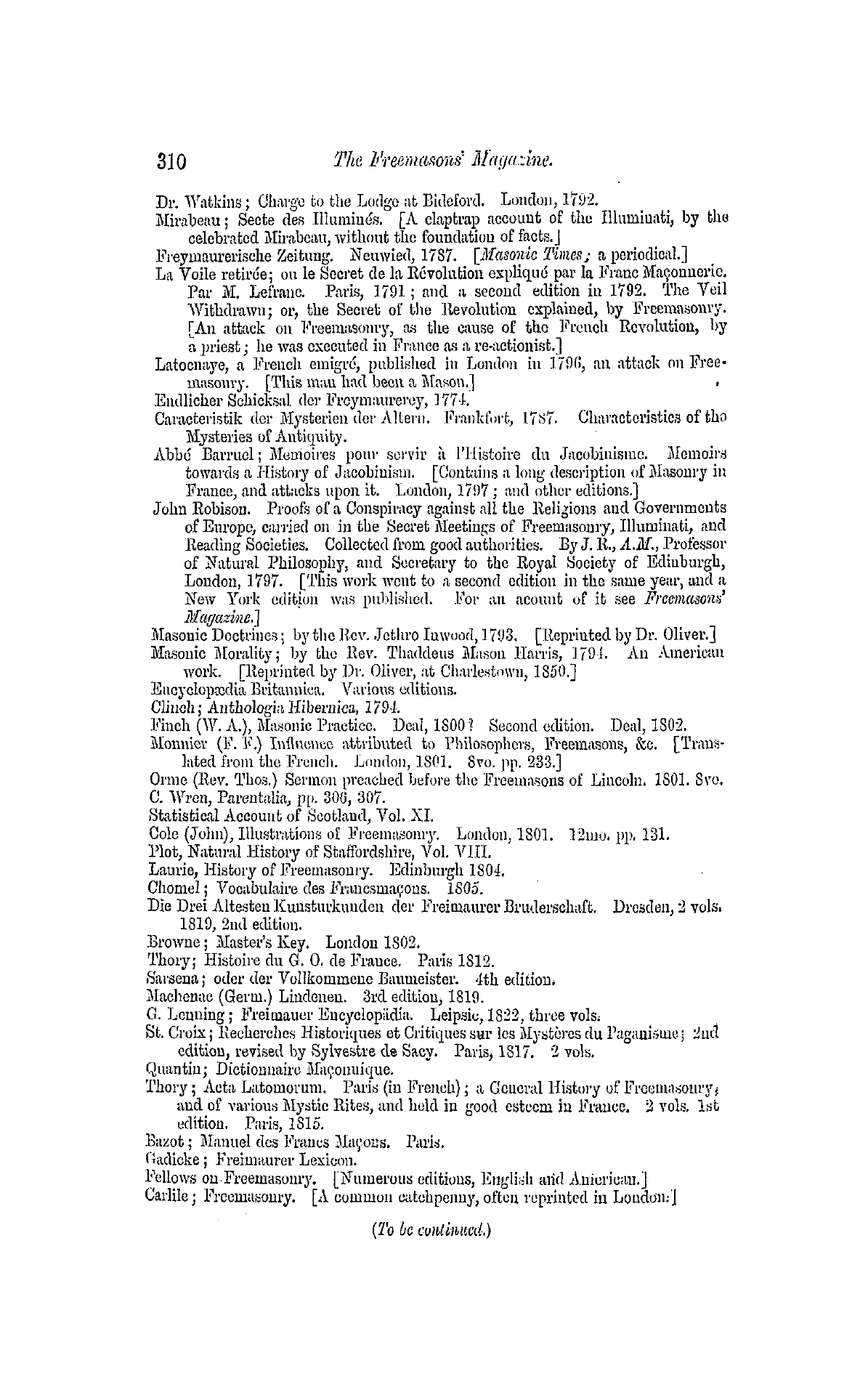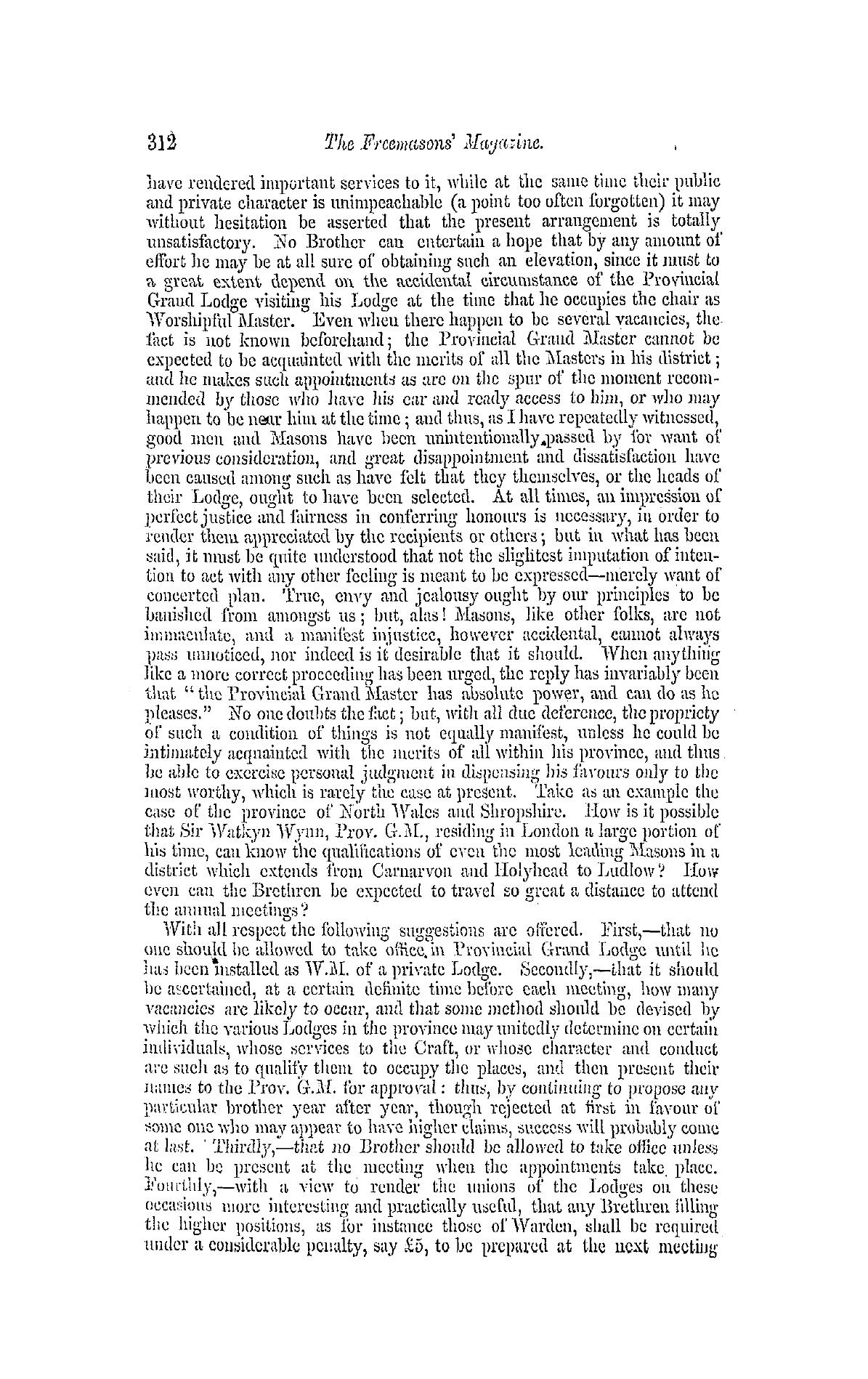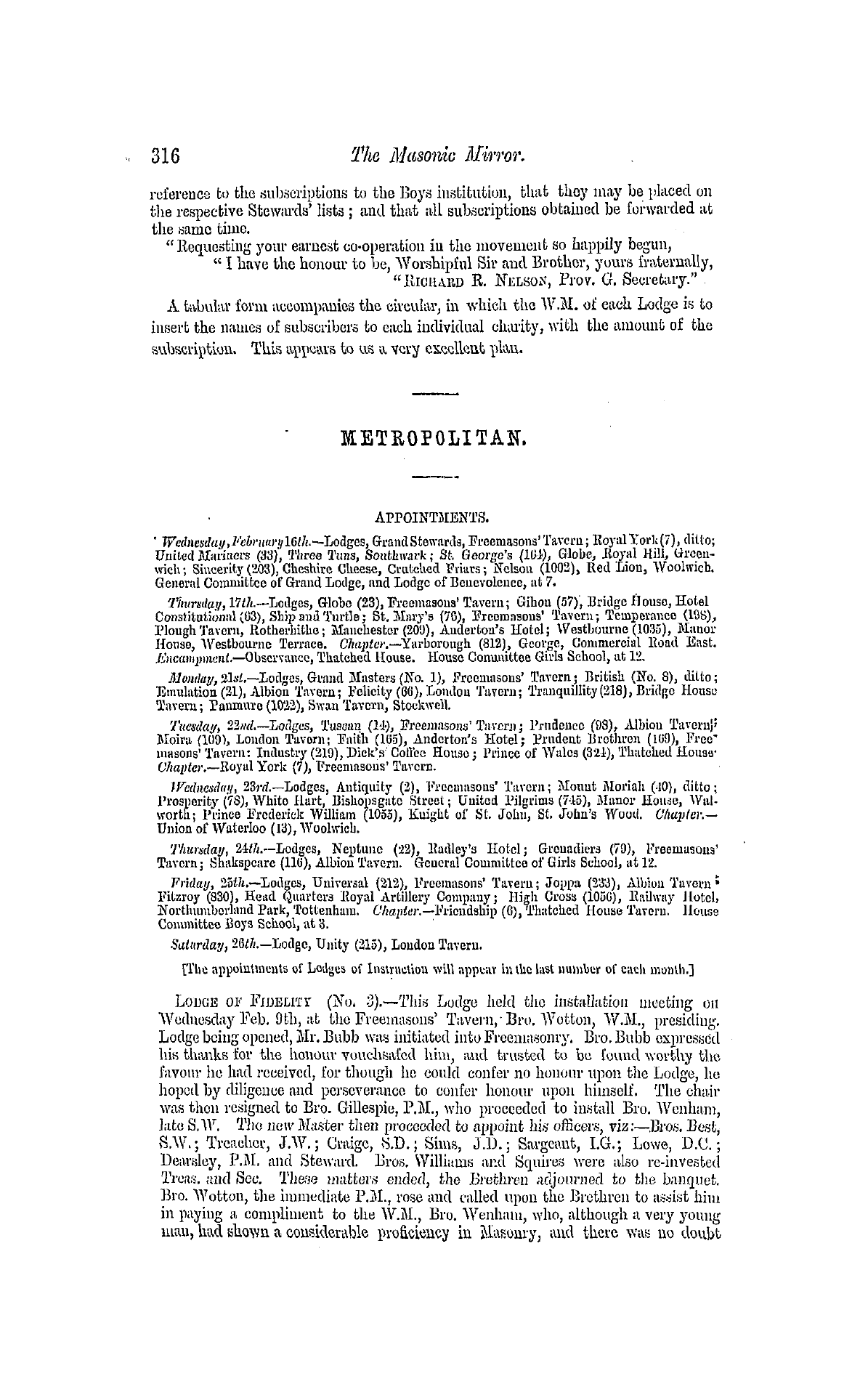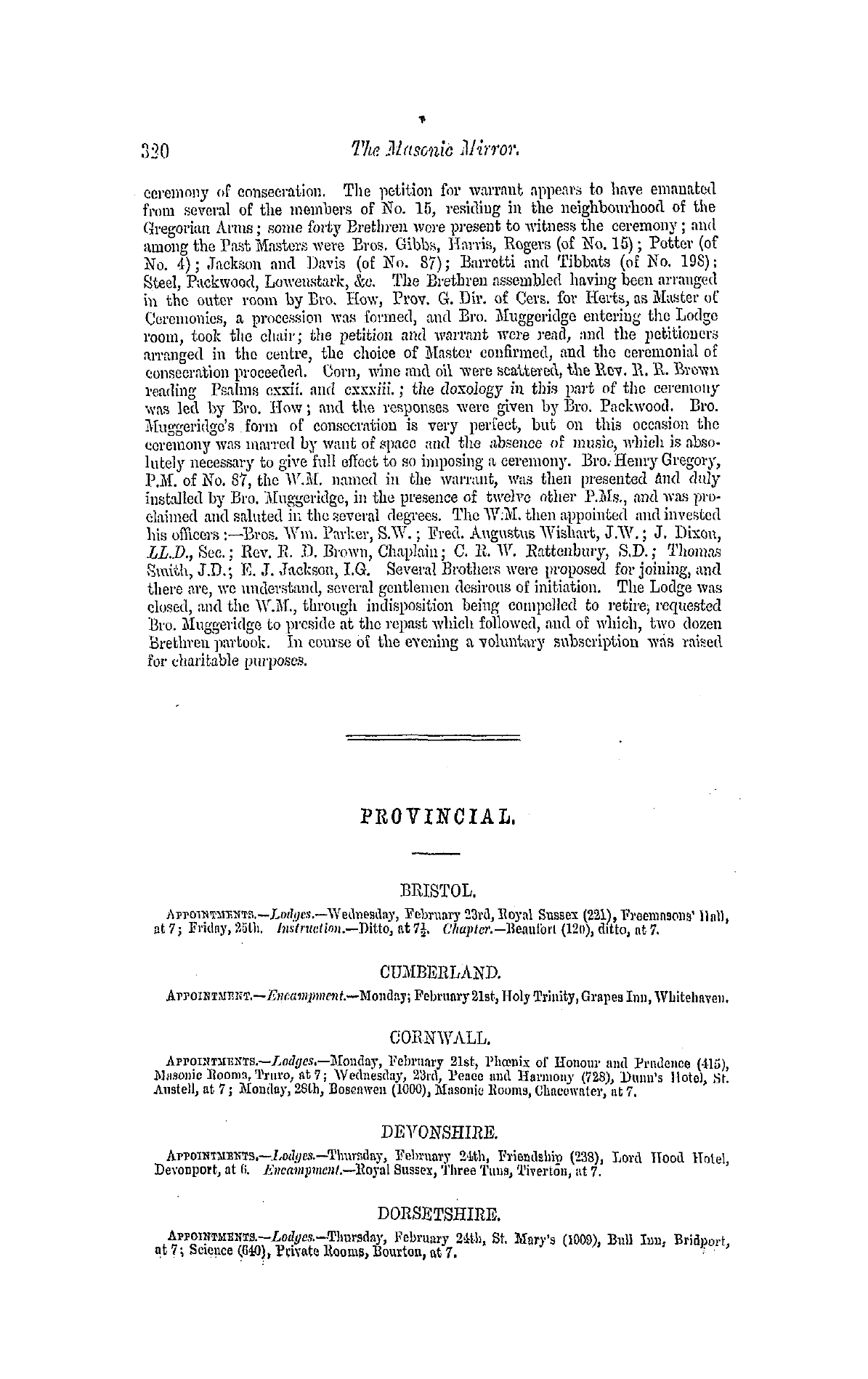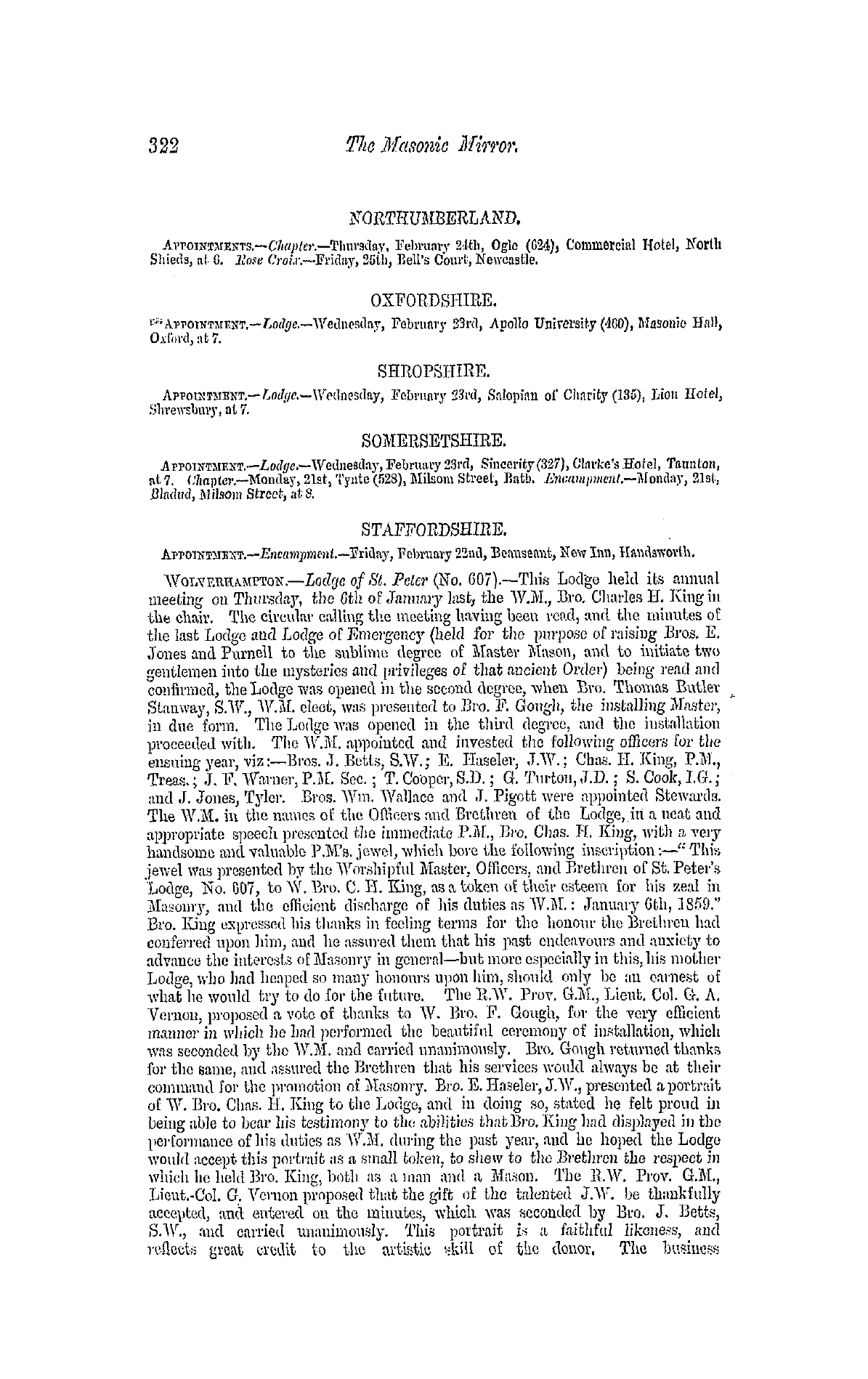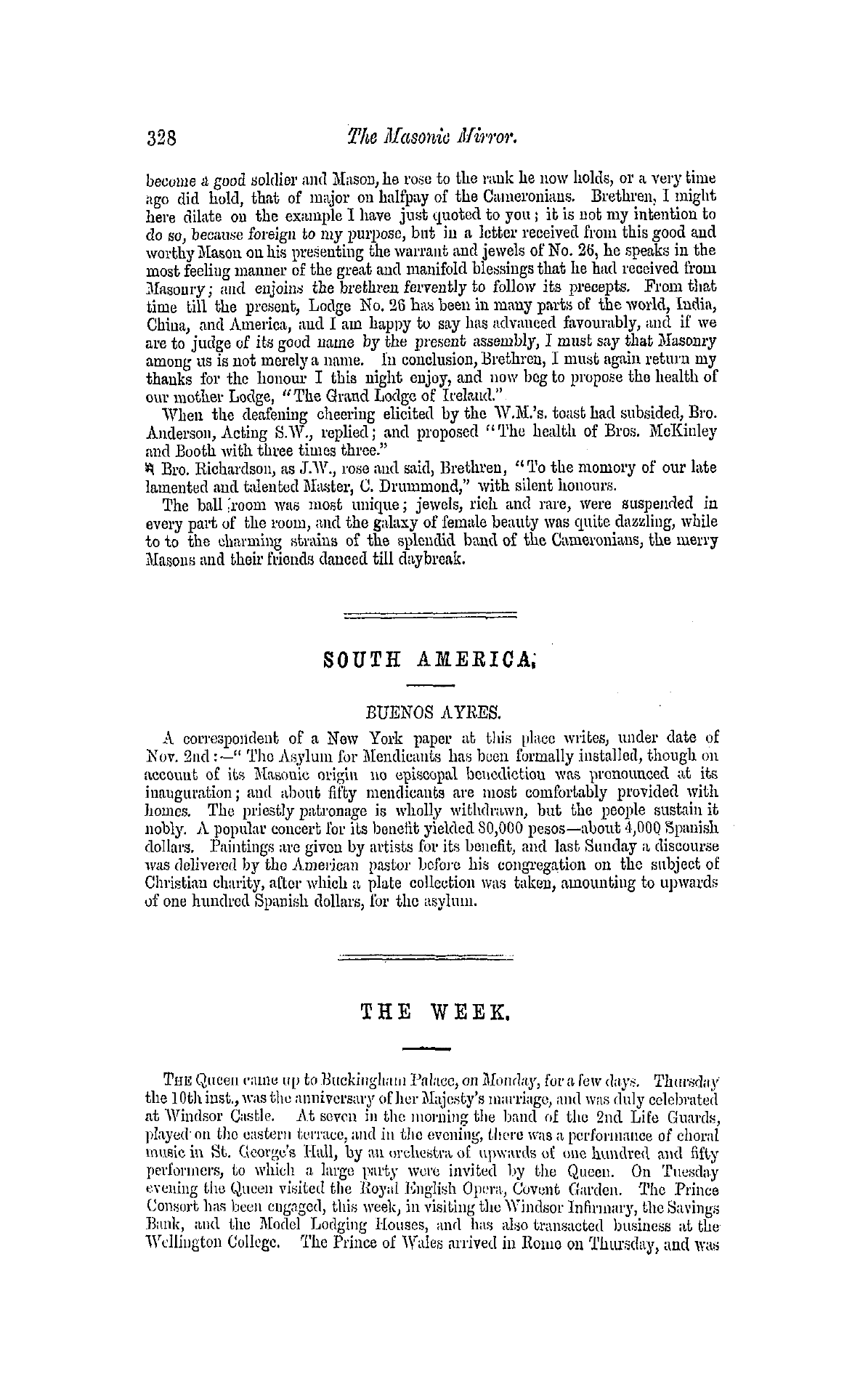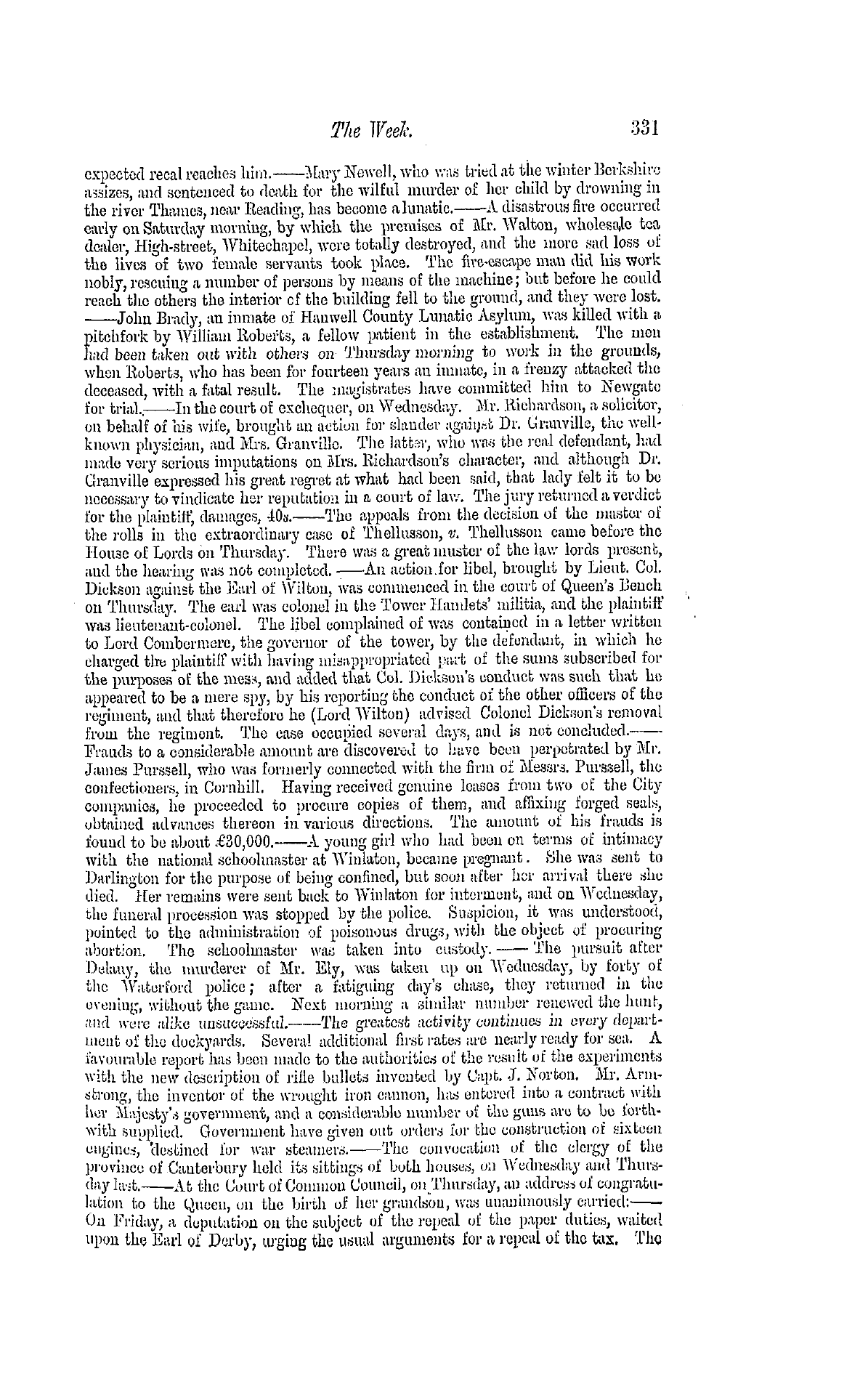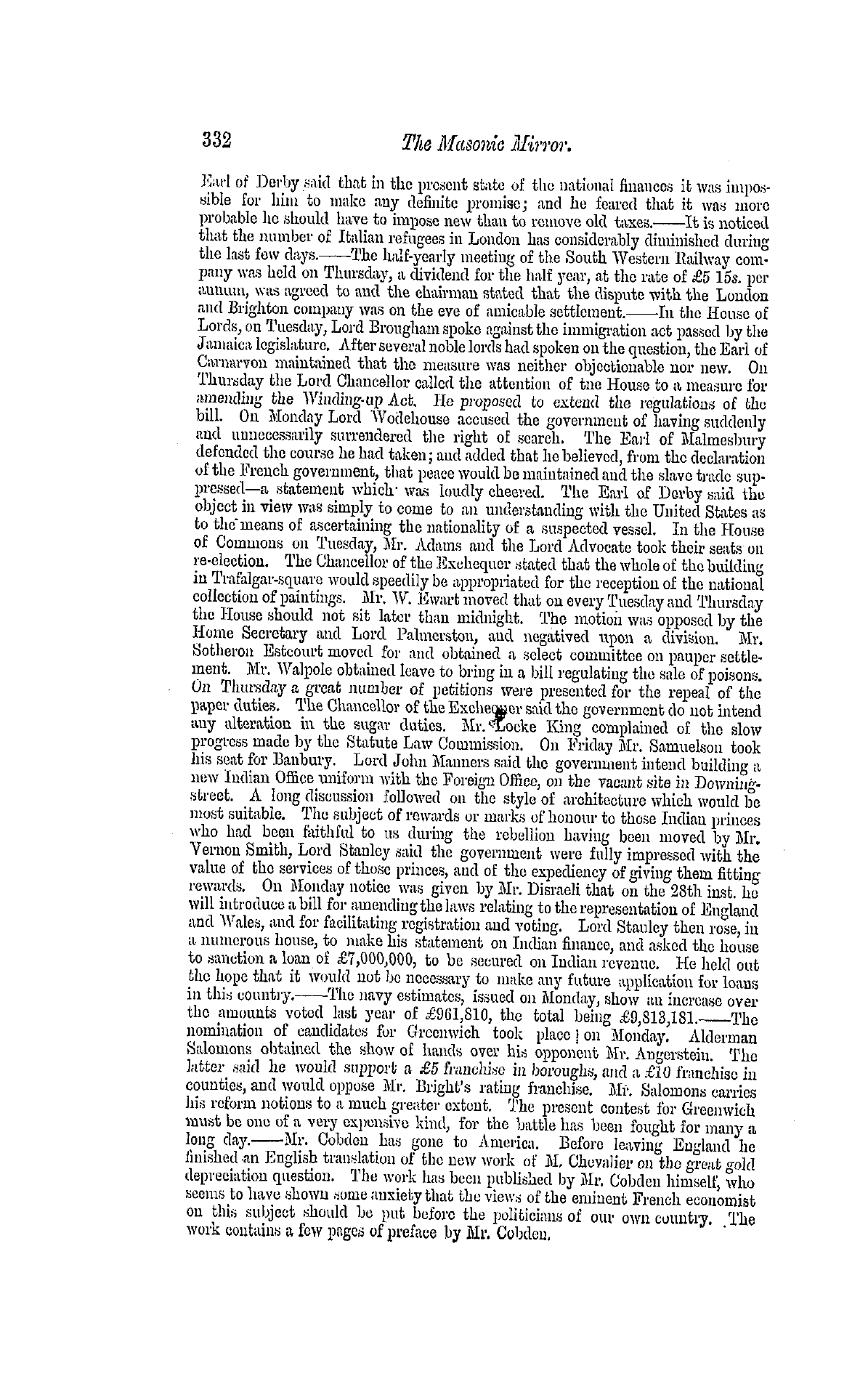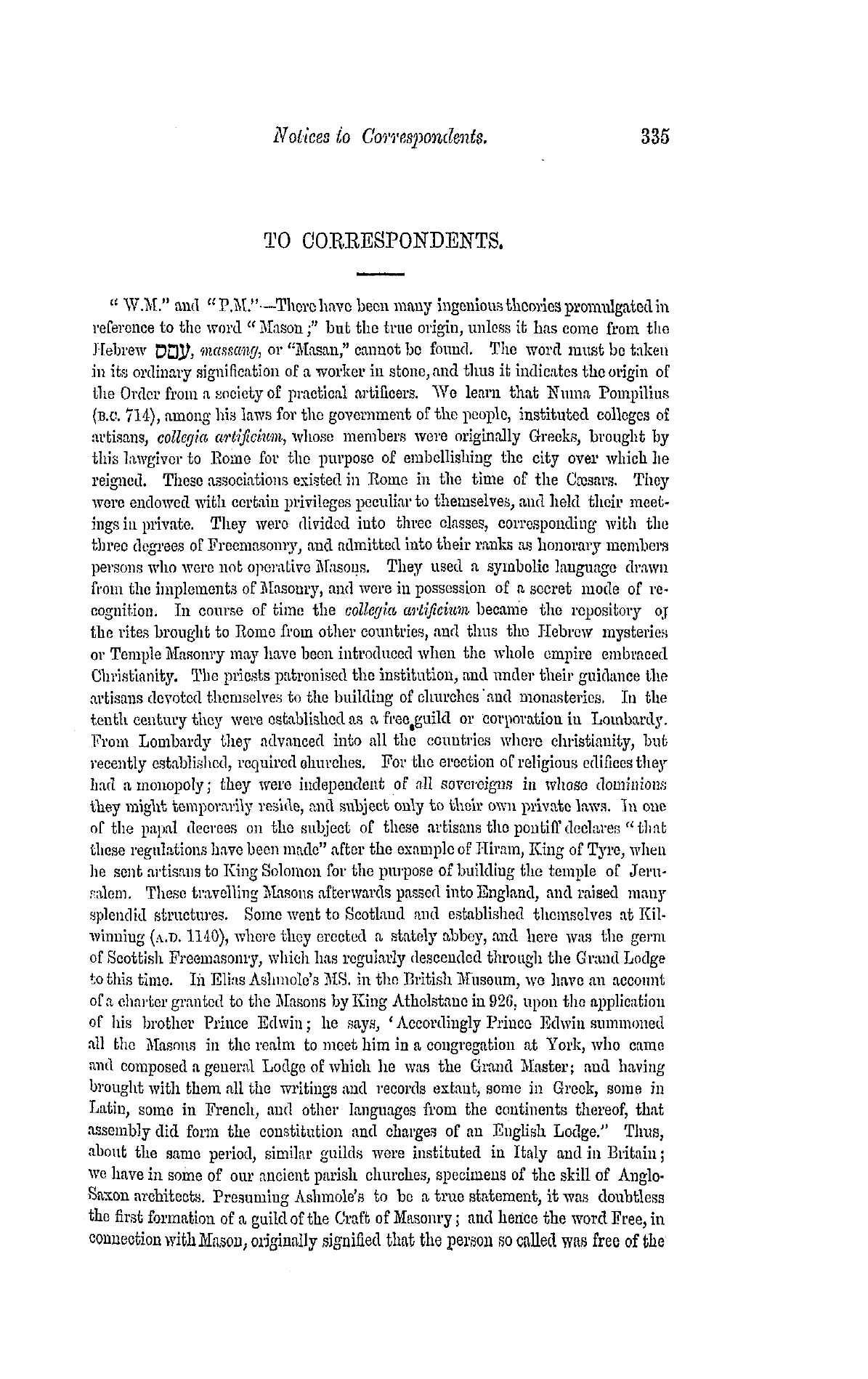-
Articles/Ads
Article THE CHEMISTRY OF COMMON THINGS. ← Page 4 of 6 →
Note: This text has been automatically extracted via Optical Character Recognition (OCR) software.
The Chemistry Of Common Things.
power of the gas . After breathing this somo time , however , he threw the bag from him , kept breathing on laboriously Avith au open mouth , holding his nose Avith his left hand , Avithout poAver to take it aivay , though aAvare of the ludicrousness of his situation : all his muscles seemed to bo throAvn into vibrating motions ; he had a violent inclination to make antic gestures ; seemed lighter than the atmosphere , and as if about to mount . Before this experiment he Avas a good deal fatigued after a long ride , of AA'hich he permanently lost all sense . "
It produced such agreeable sensations on one gentleman AVIIO inhaled it ( Jlr . Robert Southey ) as to cause him to remark that he supposed the atmosphere of the highest of all possible heavens to consist of this gas . I haA'C heard of a gentleman Avho , after administering the gas to another person , took the bag from him , supposing it to baA'e taken no
effect , but Avas surprised an instant aftonvards to find himself suddenly knocked doAvn . He retreated some distance , bufc was overtaken and again treated in a similar manner . A like disposition to pugnacity is not unfrequently evinced iu these experiments . Nitrous oxide gas is obtained from nitrate of ammonia . To prepare ifc , a smalt quantity of the . salt ( which must be very pure ) is to be put
into a retort , ( a Florence flask liaving a bent or flexible tube attached may be used , ) and the heat of the flame of a lamp or candle applied to the bulb . White fumes will soon be seen to rise . The gas may be received in a silken bag , or a bladder , to the mouth of AA'hich a wide glass tube is attached . When the gas begins to rise , this should be attached to the tube of the retort , care being of course taken that the bag is
collapsed , so as not to contain air . When the bag is filled the gas may bo inhaled , the nostrils being previously closed Avith the left hand , and the lungs exhausted of the air contained in them by a long respiration . The gas may then be breathed into and out of the bag for tAvo or three minutes .
Dr . Ure observes that mice introduced into vessels containing this gas die almost instantly , although in nitrogen , hydrogen , and carbonic acid gases , they struggle for a little while . The second gas , nitric oxide , is chiefly remarkable for its great affinity for oxygen . The gas itself is perfectly colourless , but Avhen a vessel containing it is opened in the air , it immediately absorbs a
certain quantity of tho orygen , and assumes a brilliant red colour . This red gas is the third compound , nitrous acid . When certain proportions of nitric oxide and common air are introduced into a tube under Avater , the nitric- oxide absorbs the oxygen of the air , and becomes converted into nitrous acid , which being very soluble in Avater , is dissolved , and the diminution of the volume of the gases SIIOAVS the
quantity of oxygen originally contained in the air . This formed the princip le of Dr . Priestley ' s eudiometer , an instrument for analysing the air , and measuring the quantity of oxygen contained iu it . Nitric acid is the liquid known iu a diluted state hy the name of
Note: This text has been automatically extracted via Optical Character Recognition (OCR) software.
The Chemistry Of Common Things.
power of the gas . After breathing this somo time , however , he threw the bag from him , kept breathing on laboriously Avith au open mouth , holding his nose Avith his left hand , Avithout poAver to take it aivay , though aAvare of the ludicrousness of his situation : all his muscles seemed to bo throAvn into vibrating motions ; he had a violent inclination to make antic gestures ; seemed lighter than the atmosphere , and as if about to mount . Before this experiment he Avas a good deal fatigued after a long ride , of AA'hich he permanently lost all sense . "
It produced such agreeable sensations on one gentleman AVIIO inhaled it ( Jlr . Robert Southey ) as to cause him to remark that he supposed the atmosphere of the highest of all possible heavens to consist of this gas . I haA'C heard of a gentleman Avho , after administering the gas to another person , took the bag from him , supposing it to baA'e taken no
effect , but Avas surprised an instant aftonvards to find himself suddenly knocked doAvn . He retreated some distance , bufc was overtaken and again treated in a similar manner . A like disposition to pugnacity is not unfrequently evinced iu these experiments . Nitrous oxide gas is obtained from nitrate of ammonia . To prepare ifc , a smalt quantity of the . salt ( which must be very pure ) is to be put
into a retort , ( a Florence flask liaving a bent or flexible tube attached may be used , ) and the heat of the flame of a lamp or candle applied to the bulb . White fumes will soon be seen to rise . The gas may be received in a silken bag , or a bladder , to the mouth of AA'hich a wide glass tube is attached . When the gas begins to rise , this should be attached to the tube of the retort , care being of course taken that the bag is
collapsed , so as not to contain air . When the bag is filled the gas may bo inhaled , the nostrils being previously closed Avith the left hand , and the lungs exhausted of the air contained in them by a long respiration . The gas may then be breathed into and out of the bag for tAvo or three minutes .
Dr . Ure observes that mice introduced into vessels containing this gas die almost instantly , although in nitrogen , hydrogen , and carbonic acid gases , they struggle for a little while . The second gas , nitric oxide , is chiefly remarkable for its great affinity for oxygen . The gas itself is perfectly colourless , but Avhen a vessel containing it is opened in the air , it immediately absorbs a
certain quantity of tho orygen , and assumes a brilliant red colour . This red gas is the third compound , nitrous acid . When certain proportions of nitric oxide and common air are introduced into a tube under Avater , the nitric- oxide absorbs the oxygen of the air , and becomes converted into nitrous acid , which being very soluble in Avater , is dissolved , and the diminution of the volume of the gases SIIOAVS the
quantity of oxygen originally contained in the air . This formed the princip le of Dr . Priestley ' s eudiometer , an instrument for analysing the air , and measuring the quantity of oxygen contained iu it . Nitric acid is the liquid known iu a diluted state hy the name of





















